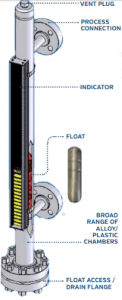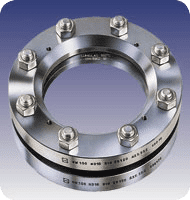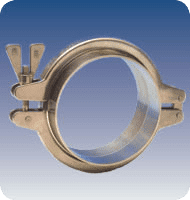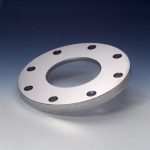METAGLAS® Sight Glass Re-use: A Hidden Opportunity for Process Plant ROI
Posted on March 26, 2025 by Scott KloetzerProcess plant engineers consistently prioritize two critical goals when it comes to sight glass management: preventing unexpected downtime and minimizing safety risks from potential system failure. Sight glasses may seem like simple components; however, their failure can halt production for extended periods and create significant safety hazards.
While there are various options for sight glass materials, one type of sight glass, METAGLAS®, offers a unique advantage that is not well known—METAGLAS sight glass observation components are uniquely reusable. This feature not only extends service life but can also help reduce plant downtime while enhancing operational safety.
Understanding the METAGLAS Advantage
When a conventional sight glass fails, a process line can often face extended downtime waiting for replacement parts. In many facilities, maintaining adequate spare glass inventory becomes a constant challenge, as standard borosilicate glass units must be discarded and replaced after any removal – even during routine maintenance cycles – due to the risk of hidden damage, as specified by manufacturers like Corning.
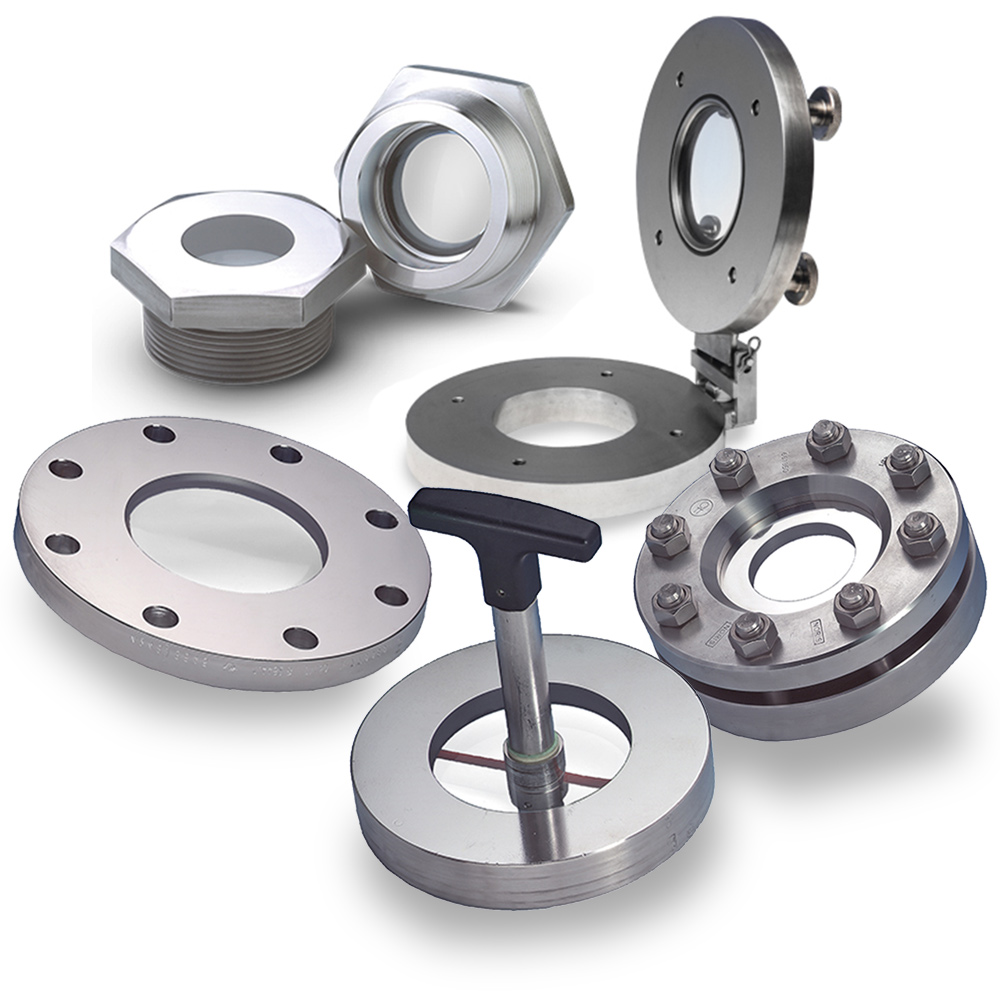
METAGLAS’s reusable design fundamentally changes this equation. METAGLAS units can safely remain in service even with minor etching while replacement units are procured – a crucial advantage for maintaining continuous operations.
This capability proves particularly valuable during mandatory maintenance cycles, such as gasket replacements required in many facilities every six months. Corning, as the glass manufacturer, requires that conventional borosilicate sight glasses require replacement when gaskets are changed, since removing the glass from its housing leaves the glass in a weakened state. However, METAGLAS units can be cleaned, inspected and returned to service, eliminating a potential source of extended downtime.
The key to this reusability lies in METAGLAS’s innovative design. While standard sight glasses rely on direct compression on the glass surface, METAGLAS employs a metal ring that bears compressive force. The glass disk is securely bonded within this metal ring, creating a hermetically sealed, leak-proof joint that maintains its integrity through multiple usage cycles. METAGLAS’s metal-glass fusion design enables safe reuse through multiple maintenance cycles while maintaining structural integrity.
Glass Etching and the Added Safety of METAGLAS
METAGLAS’s unique construction also transforms how facilities can manage glass etching. While conventional borosilicate sight glasses must be replaced at the first sign of etching due to increased breakage risk, METAGLAS units maintain their structural integrity even with visible etching. This again is due to the compression-sealed structure created by the metal-glass fusion.
Testing has demonstrated that METAGLAS units maintain their full rated pressure even with noticeable etching present. Facilities familiar with this capability supplied by METAGLAS safely continue operation with minor etching present while awaiting replacement units. This is a practice supported by extensive internal pressure testing of METAGLAS that shows it maintains its integrity even under challenging conditions for months at a time after etching is detected.
This enhanced safety profile directly enables reusability in two ways:
- Units can be safely removed and reinstalled during routine maintenance without requiring immediate replacement
- Minor etching doesn’t automatically trigger replacement, allowing facilities to plan maintenance around their operational schedule rather than rushing emergency replacements
The rate of etching varies significantly by application. While aggressive chemical processes at high temperatures may cause more rapid etching, many applications see minimal chemical attack over extended periods. This variability makes METAGLAS’s ability to safely operate with minor etching particularly valuable for maintaining continuous operations while managing proactive maintenance schedules.
Even under extreme temperatures up to 536°F, the rating for the METAGLAS sanitary sight glass window, or during overpressure situations, sudden total failures involving leakage or explosive shattering, essentially never occur. This robust performance characteristic enables maintenance teams to have more flexibility when determining the need and timing to replace a sight glass.
Real World Performance Examples
The longevity of METAGLAS units varies significantly based on operating conditions and maintenance protocols. In some aggressive environments, such as facilities using high-temperature caustics with frequent cleaning cycles, facilities might replace gaskets every six months. However, other installations have maintained the same METAGLAS units for up to ten years with regular gasket replacements. This variation typically depends on factors like:
- Process temperature ranges
- Cleaning frequency and chemical strength
- Daily thermal cycling requirements
- Chemical composition of process materials
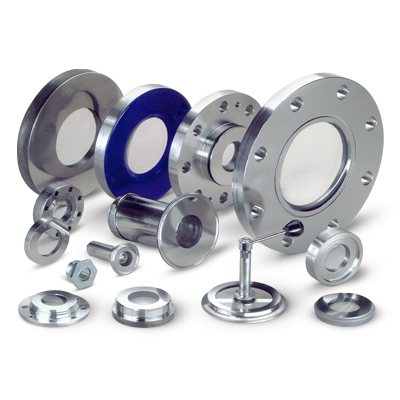
Implementation and Safety Monitoring
METAGLAS’s distinctive construction with its compressive design on the outside metal ring rather than the glass sets it apart from conventional options. This unique design delivers several critical operational benefits:
- Elimination of catastrophic failures that could compromise worker safety or trigger emergency shutdowns
- Ability to maintain operation even when glass shows initial signs of wear, allowing planned rather than emergency maintenance
- Enhanced resistance to thermal cycling and pressure fluctuations
- Superior sealing integrity that prevents chemical leaks and contamination
METAGLAS units retrofit easily to existing observation ports using standard dimensions, though users should note a slightly reduced viewing area due to the metal ring construction. Regular safety monitoring involves straightforward visual inspections checking for:
- Cracks, chips, or scratches
- Glass discoloration or cloudiness
- Thermal damage or contamination
- Steel ring corrosion or deformation
- Overall clarity and dimensional accuracy
Simple measurement tools can track glass thickness over time for facilities that pursue proactive replacement policies rather than reactive emergency maintenance. This capability proves particularly valuable in applications involving corrosive materials or frequent thermal cycling.
Industry-Specific Applications and Benefits
Pharmaceutical Manufacturing
In pharmaceutical applications, METAGLAS units deliver specific advantages beyond basic sight glass functionality. The fusion-sealed construction creates a hermetically sealed, leak-proof joint that supports compliance with strict industry standards. This feature proves particularly valuable in facilities using tri-clamp fitted units that undergo frequent cleaning cycles, as the clamp resists leaking to help maintain the component’s integrity through repeated maintenance events.
Chemical Processing
Chemical processing facilities benefit from METAGLAS’s ability to withstand harsh environments while maintaining operational flexibility. The units’ resistance to chemical attack and thermal cycling, combined with their ability to remain in service even with minor etching, helps facilities maintain continuous operations while managing maintenance schedules proactively.
Process Areas with Frequent Cleaning Requirements
Operations requiring regular cleaning cycles or product changeovers find particular value in METAGLAS’s reusability. The units can be removed, cleaned, and returned to service multiple times without compromising their integrity—a significant advantage over conventional sight glasses that often require replacement after removal.
Operational Impact Assessment
When evaluating METAGLAS implementation, facilities should consider:
- Current unplanned downtime from sight glass failures
- Safety risks from conventional sight glass degradation
- Time spent waiting for replacement parts
- Impact of emergency shutdowns on production schedules
- Current maintenance cycle disruptions
- Inventory carrying costs for replacement units
- Compliance requirements for sealed systems
Re-use Represents a Strategic Investment
METAGLAS sight glasses represent more than just another equipment choice–they’re a strategic investment for slashing downtime and provide an upgrade for safety compared to conventional options. The fact that METAGLAS enables re-use through multiple maintenance cycles while maintaining performance lends facilities the reliability and longevity that transforms sight glass maintenance from a potential vulnerability into a manageable aspect of plant operations.
For facilities currently using conventional sight glasses, evaluating a transition to METAGLAS could uncover significant long-term savings while enhancing operational safety and reliability. The key lies in recognizing that sight glass selection isn’t just about initial cost or basic functionality – it’s about maximizing value over the entire lifecycle of the equipment. If you are ready to examine the total cost of ownership (TCO) of your sight glass equipment, give us a call to investigate the ways METAGLAS can benefit your processing operations.

About the Author: Scott Kloetzer
Scott Kloetzer is the Director of Business Development at LJ Star Inc., a market-leading manufacturer of process observation equipment. He has more than 10 years of experience providing innovative process observation solutions for the pharmaceutical, chemical processing and oil industries. Scott is a graduate of the University of Akron with a degree in sales and marketing.Subscribe to our Blog
Categories
- Certifications
- Company
- In The News
- Industry Information
- METAGLAS® Sight Glasses
- PackExpo 2020
- Sanitary Clamps
- Sanitary Fittings
- Sight Flow Indicator Benefits
- Sight Glass Applications
- Sight Glass Construction
- Sight Glass Lighting
- Sight Glass Lights
- Sight Glass Process Vessel Camera
- Sight Glasses
- Trade Shows
- Webcast
